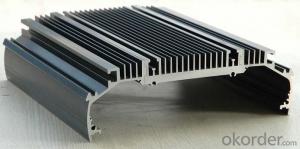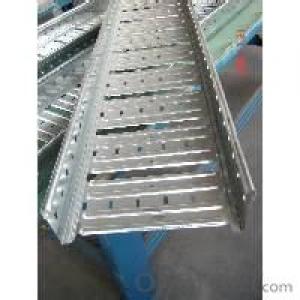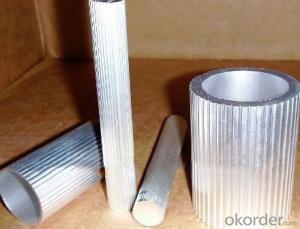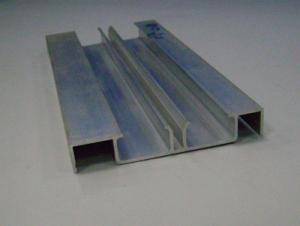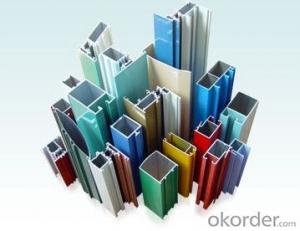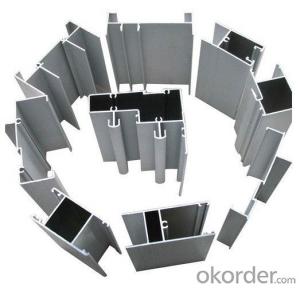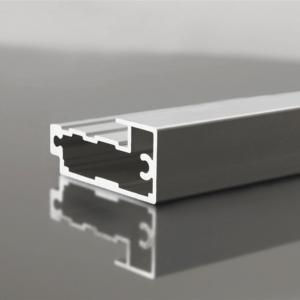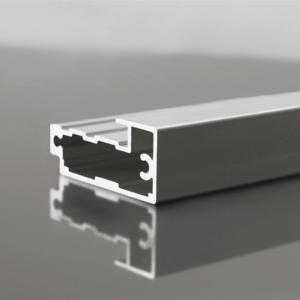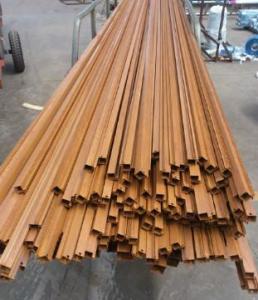Standard Aluminum Profiles - Profile Aluminium Profile Price Aluminium Extrusion Profile Factory
- Loading Port:
- China Main Port
- Payment Terms:
- TT OR LC
- Min Order Qty:
- -
- Supply Capability:
- -
OKorder Service Pledge
Quality Product, Order Online Tracking, Timely Delivery
OKorder Financial Service
Credit Rating, Credit Services, Credit Purchasing
You Might Also Like
Material | Alloy 6063,6061,6005or according to customer’s choice |
Temper | T3, T4, T5, T6 |
Surface | Anodize, electrophoresis, powder coating, PVDF coating, wood grain painting, matted, etc. |
Color | Any colour based on Standard Germany RAL Mark |
Length | Coating 6.5 meters, Anodizing 6.5 meters, Mill finish 5 meters |
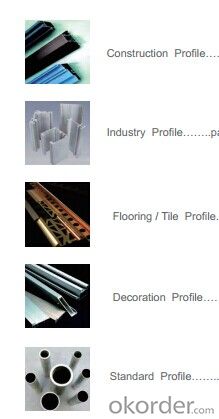

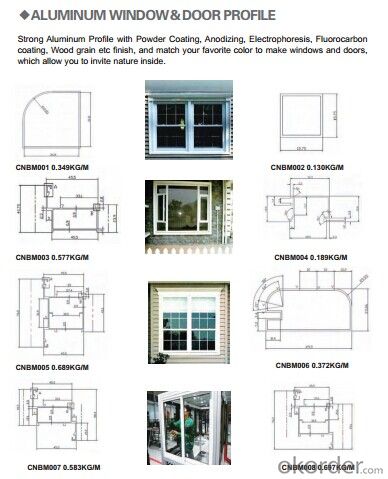
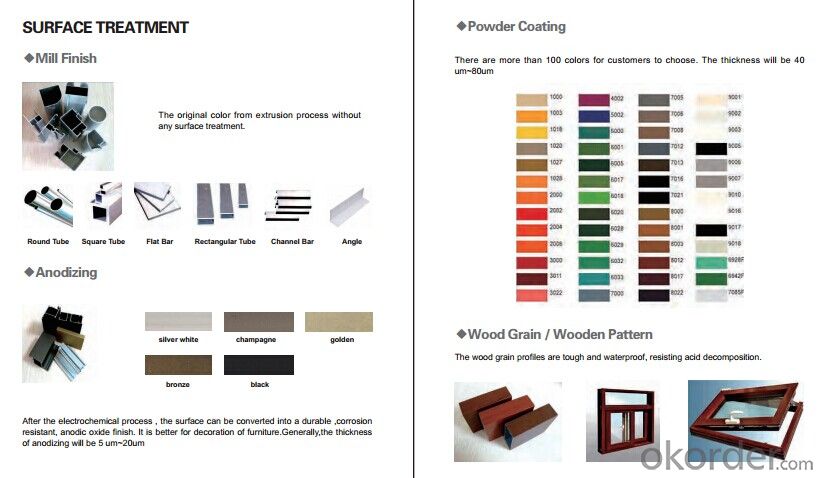
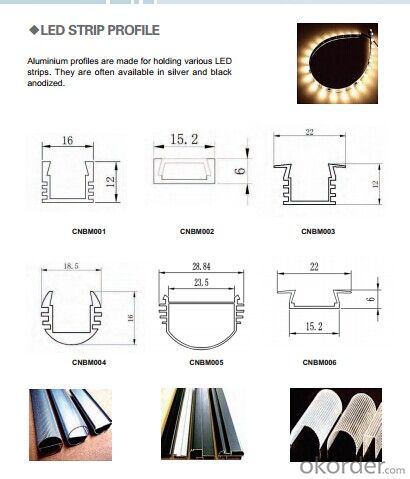
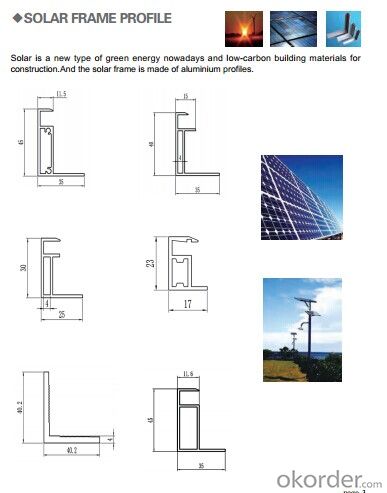
- Q: How do I cut and shape aluminum profiles?
- In order to cut and shape aluminum profiles, one must possess several tools and techniques. Here is a step-by-step manual to aid you in accomplishing this task: 1. Obtain the required tools: A miter saw or a circular saw equipped with a carbide-tipped blade suitable for aluminum cutting is essential. Additionally, it is advisable to possess a metal file, sandpaper, a deburring tool, and a tape measure. 2. Measure and mark: Utilize a tape measure to determine the desired length of the aluminum profile. Indicate the location where the cut is to be made using a pencil or marker. 3. Secure the aluminum: Firmly place the aluminum profile on a workbench or cutting surface. Utilize clamps or a vice to hold it securely in place, ensuring it remains stationary during the cutting process. 4. Cut the aluminum: Position the saw blade at the marked location and align it perpendicular to the aluminum profile. Initiate the saw and gradually guide it through the aluminum, applying constant pressure. Allow the saw to perform the task without exerting excessive force, as excessive pressure may cause the blade to bind or chip. Exercise caution and wear safety goggles and gloves to shield yourself from any flying debris. 5. Smooth the edges: Following the cut, you may observe sharp or rough edges on the aluminum profile. Employ a metal file or sandpaper to level these edges, ensuring a clean and safe outcome. 6. Deburring: Employ a deburring tool to eliminate any burrs or rough spots remaining from the cutting process. Gently run the tool along the cut edges, applying slight pressure to smoothen them. 7. Shape the aluminum: If shaping the aluminum profile is necessary, numerous methods can be employed. A common technique involves clamping the profile to a workbench and gradually bending it using a hammer or rubber mallet. Alternatively, specialized tools such as a metal brake or bending machine can be utilized for more precise shaping. 8. Final touches: Once the aluminum profile has been cut and shaped, thoroughly clean it to eliminate any debris or metal shavings. Inspect the profile for any imperfections and make necessary adjustments before employing it for the intended application. Remember to exercise proper safety precautions throughout the process, including wearing safety goggles, gloves, and securely fastening the aluminum profile to prevent accidents.
- Q: The 50 series and the 60 series of aluminum profiles, which one is good?
- Of course, 60 of the good.60 and 50 refers to profiles, from the indoor to outdoor overall thickness of 60MM and 50MM. respectively60 of the cross section is larger than 50 1cm, much stronger. The glass gap that can be installed is also larger
- Q: Explain the advantages of utilizing aluminum profiles in the construction industry.
- <p>Aluminum profiles offer several benefits in construction, including high strength-to-weight ratio, which means they are strong yet lightweight. This reduces the load on structures and facilitates easier handling and installation. They are also corrosion-resistant, ensuring longevity and low maintenance costs. Aluminum profiles are recyclable and environmentally friendly, contributing to sustainable construction practices. Their malleability allows for versatile design and customization, accommodating various architectural needs. Additionally, they have excellent thermal conductivity, which can be beneficial for heat management in buildings. Lastly, their aesthetic appeal and modern look enhance the visual appeal of construction projects.</p>
- Q: How do I maintain and clean aluminum profiles?
- To maintain and clean aluminum profiles, there are a few steps you can follow: 1. Regular dusting: Start by removing any loose dust or dirt using a soft cloth or a feather duster. This will prevent the build-up of grime and make the cleaning process easier. 2. Prepare a cleaning solution: Mix a mild detergent or dish soap with warm water in a bucket or a spray bottle. Avoid using harsh chemicals or abrasive cleaners as they can damage the aluminum surface. 3. Wipe down the profiles: Dip a soft cloth or sponge into the cleaning solution and gently scrub the aluminum profiles. Pay special attention to any areas with stains or stubborn dirt. 4. Rinse with clean water: After cleaning, rinse the profiles thoroughly with clean water to remove any residual soap or cleaning solution. This step is crucial to prevent any residue from drying and leaving streaks or marks. 5. Dry the profiles: Use a soft, dry cloth or towel to wipe the aluminum profiles dry. This will help prevent water spots and maintain the shine of the metal. 6. Polish (optional): If desired, you can apply a non-abrasive aluminum polish to further enhance the shine and protect the surface. Follow the instructions on the polish packaging for best results. 7. Regular maintenance: To keep the aluminum profiles in good condition, it is essential to perform regular maintenance. This includes dusting them regularly, avoiding abrasive materials or cleaners, and addressing any stains or spills promptly. By following these steps, you can maintain and clean aluminum profiles effectively, keeping them looking great for longer periods.
- Q: What does T6 mean in aluminum alloy sections?
- In aluminium alloy section, T6 means heat treatment process. T6 solid solution heat treatment after artificial aging state, suitable for solid solution after heat treatment, no cold processing (for straightening and leveling, but does not affect the mechanical properties of the limit) the following product T1~T7 process:T1: artificial agingT2: annealingT4: solution treatment plus natural agingT5: solid solution treatment with incomplete artificial agingT6: solid solution treatment plus full artificial agingT7: solid solution treatment plus stabilization treatment
- Q: This question asks if aluminum profiles can be used in cold weather conditions and if they maintain their properties in such environments.
- <p>Yes, aluminum profiles are suitable for use in cold climates. Aluminum is a durable material with excellent resistance to corrosion and weathering, which includes maintaining its integrity in low temperatures. It does not rust or degrade significantly in cold conditions, making it a reliable choice for construction and other applications in cold climates. However, it's important to consider the specific alloy and any protective coatings or treatments that may be necessary to ensure optimal performance in extreme cold.</p>
- Q: Does the profiled bar include aluminum profiles? What are the differences between aluminum and profile?
- Often called special-shaped material from the material include: aluminum alloy profile and PVC profileDoors and windows and other decorative materials are the largest use of profiles
- Q: This question asks about the characteristics of aluminum profiles, specifically whether they are lightweight and easy to handle.
- <p>Yes, aluminum profiles are known for their lightweight nature and ease of handling. They are made from aluminum, which is a lightweight metal with a low density. This makes aluminum profiles ideal for applications where weight is a concern, such as in construction, automotive, and aerospace industries. Additionally, their lightweight characteristic also contributes to their ease of handling, as they can be easily maneuvered and installed without requiring heavy machinery or excessive manpower.</p>
- Q: Are aluminum profiles suitable for use in flooring systems?
- <p>Yes, aluminum profiles can be used for flooring systems. They are known for their strength, durability, and resistance to corrosion, making them ideal for various flooring applications. Aluminum profiles can be used to create modular flooring systems, providing a lightweight and easy-to-install solution. They can also be used in conjunction with other materials to create hybrid flooring systems, offering a combination of benefits such as thermal insulation, acoustic performance, and structural integrity.</p>
- Q: Is aluminum alloy made of industrial aluminum?
- Aluminum profile is an applied product form of aluminum alloyAluminum is the aluminum bar through hot melt, extrusion, so as to obtain different cross-section of aluminum. The production process of aluminum profile mainly includes three processes: casting, extrusion and coloring.First, according to use can be divided into the following categories: 1. building doors and windows, aluminum doors and windows [1] (divided into two windows and curtain walls). Special aluminum radiator 2. CPU radiator 3. Aluminum Alloy shelf aluminum profile, the difference between them is that the different cross-sectional shapes. They are produced by hot melt extrusion 4.. Industrial aluminum: mainly used in automation equipment, sealing cover skeleton and the custom mold machinery and equipment according to their own requirements, such as assembly line conveyor belt, hoisting machine, glue machine, testing equipment, electronic machinery industry and clean room with the majority!
Send your message to us
Standard Aluminum Profiles - Profile Aluminium Profile Price Aluminium Extrusion Profile Factory
- Loading Port:
- China Main Port
- Payment Terms:
- TT OR LC
- Min Order Qty:
- -
- Supply Capability:
- -
OKorder Service Pledge
Quality Product, Order Online Tracking, Timely Delivery
OKorder Financial Service
Credit Rating, Credit Services, Credit Purchasing
Similar products
Hot products
Hot Searches
Related keywords













